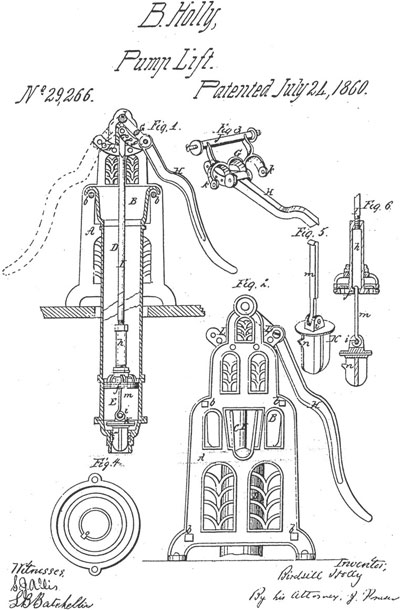#121 Holly Fire Protection and Water System
1863
Site of the first US integrated system to supply water for public safety
Referred to as the "catalyst of the Industrial Revolution," textile manufacturing helped to transform the American economy from an agricultural to a manufacturing economy. It led to transitions from human to mechanical power and from wood to metal construction. Population shifts resulted from significant numbers of people moving from rural areas to work in urban factories. The collection of tools and machinery housed at the American Textile History Museum (ATHM) represents a collection of ideas which developed during this period.
There are more than 250 spinning wheels and more than 300 examples of industrial-era textile machinery at ATHM. Among the highlights are: a Cotton Gin, Prattville, Ala., between 1873 and 1899; an Artemus Dryden Woolen Card, Holden, Mass., circa 1825; a Four-part Wool Card Line, Bridesburg, Penn., c. 1870; a Throstle Frame, Lowell, Mass., c. 1835; and an M.A. Furbush & Son Power Loom, Philadelphia, Penn., c. 1870.
Landmark Location
Erie Canal Musueum
Lockport, NY 14094
Plaque location, if specific
Outside small exhibit
Visiting Info
Regular hours: May-Oct, during canal operating hours
Related Links
Lockport Cave website
http://lockportcave.com/birdsill-holly
Ceremony Notes
1987
See also the Lockport District Heating Heritage Site.
